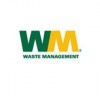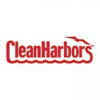


i
Filter interviews by
Vishvaraj Environment Project Engineer Interview Questions and Answers
5 Interview questions
Reverse osmosis is a water purification process that uses a partially permeable membrane to remove ions, molecules, and larger particles from drinking water.
Reverse osmosis works by applying pressure to a concentrated solution to force water molecules through a semipermeable membrane, leaving behind contaminants.
The process helps remove impurities such as salt, minerals, and other particles from water, making it s...
A flow diagram of a desalination plant shows the process of converting saltwater into freshwater.
Intake of seawater from the ocean
Pre-treatment to remove large particles and debris
Desalination process (such as reverse osmosis or distillation)
Post-treatment to ensure water quality meets standards
Distribution of freshwater to consumers
Disposal of brine or concentrated salt solution
Energy recovery systems to optimize...
Type V cement is typically used in sulfate-rich water due to its high resistance to sulfate attack.
Type V cement is specially formulated to resist sulfate attack
It has a low heat of hydration and high resistance to chemical attack
Examples of Type V cement include Portland cement and blended hydraulic cements
A pile is a long, slender column typically made of concrete or steel used to support structures like buildings or bridges.
Piles are driven into the ground to transfer loads from the structure to the soil below.
They are commonly used in construction projects where the soil is not strong enough to support the weight of the structure.
Examples of where piles are used include building foundations, bridges, and retainin...
Desalination is the process of removing salt and other minerals from seawater to make it suitable for drinking or irrigation.
Desalination can be done through processes like reverse osmosis, distillation, and electrodialysis.
Reverse osmosis involves forcing seawater through a membrane to separate salt from water.
Distillation involves heating seawater to create steam, which is then condensed back into water, leaving...
Vishvaraj Environment Project Engineer Interview Experiences
3 interviews found
I appeared for an interview in Jan 2025.
(5 Questions)
- Q1. What is the process of desalination?
- Ans.
Desalination is the process of removing salt and other minerals from seawater to make it suitable for drinking or irrigation.
Desalination can be done through processes like reverse osmosis, distillation, and electrodialysis.
Reverse osmosis involves forcing seawater through a membrane to separate salt from water.
Distillation involves heating seawater to create steam, which is then condensed back into water, leaving the ...
- Q2. What is the working method of Reverse Osmosis?
- Ans.
Reverse osmosis is a water purification process that uses a partially permeable membrane to remove ions, molecules, and larger particles from drinking water.
Reverse osmosis works by applying pressure to a concentrated solution to force water molecules through a semipermeable membrane, leaving behind contaminants.
The process helps remove impurities such as salt, minerals, and other particles from water, making it suitab...
- Q3. What is the flow diagram of a desalination plant?
- Ans.
A flow diagram of a desalination plant shows the process of converting saltwater into freshwater.
Intake of seawater from the ocean
Pre-treatment to remove large particles and debris
Desalination process (such as reverse osmosis or distillation)
Post-treatment to ensure water quality meets standards
Distribution of freshwater to consumers
Disposal of brine or concentrated salt solution
Energy recovery systems to optimize effi...
- Q4. What type of cement is used in sulfate-rich water?
- Ans.
Type V cement is typically used in sulfate-rich water due to its high resistance to sulfate attack.
Type V cement is specially formulated to resist sulfate attack
It has a low heat of hydration and high resistance to chemical attack
Examples of Type V cement include Portland cement and blended hydraulic cements
- Q5. What is pile and where we used
- Ans.
A pile is a long, slender column typically made of concrete or steel used to support structures like buildings or bridges.
Piles are driven into the ground to transfer loads from the structure to the soil below.
They are commonly used in construction projects where the soil is not strong enough to support the weight of the structure.
Examples of where piles are used include building foundations, bridges, and retaining wal...
I applied via Naukri.com and was interviewed before Apr 2023. There was 1 interview round.
(1 Question)
- Q1. Generally civil structures, surveying and Construction Management
Interview Preparation Tips

(1 Question)
- Q1. About working experience and opportunity to work in project
Interview Preparation Tips
Top trending discussions




Interview questions from similar companies

I applied via Walk-in and was interviewed in Nov 2020. There were 3 interview rounds.
Interview Questionnaire
1 Question
- Q1. About project experience and hvac related
Interview Preparation Tips

I applied via Walk-in and was interviewed before Nov 2021. There were 2 interview rounds.

(2 Questions)
- Q1. Core knowledge of mechanical engineering and project management
- Q2. What is project life cycle.
- Ans.
Project life cycle is the series of phases a project goes through from initiation to closure.
It includes initiation, planning, execution, monitoring and control, and closure phases.
Initiation involves defining the project and its objectives.
Planning involves creating a roadmap for the project, including timelines, budget, and resources.
Execution involves carrying out the plan and completing the project deliverables.
Mon...
Interview Preparation Tips
- Mechanical Engineering

I applied via Approached by Company and was interviewed in Oct 2023. There were 2 interview rounds.

(2 Questions)
- Q1. Water and wastewater treatment plant erection and commissioning with process
- Ans.
Water and wastewater treatment plant erection and commissioning involves the installation and start-up of the necessary equipment and processes for treating water and wastewater.
Erection and commissioning involves the installation of equipment such as pumps, pipes, tanks, and filters.
The process includes setting up the necessary treatment processes like coagulation, flocculation, sedimentation, filtration, and disinfec...
- Q2. Water and wastewater treatment plant erection and commissioning.

I appeared for an interview before Feb 2021.
(3 Questions)
- Q1. Tell me about yourself.
- Q2. Share details of your previous job.
- Q3. What are your salary expectations?
(2 Questions)
- Q1. Quality site inspection
- Q2. Materials Testing & Third party Inspection
Interview Preparation Tips

I applied via Recruitment Consulltant and was interviewed in Oct 2024. There were 3 interview rounds.
(1 Question)
- Q1. Write unit testing for adding two nimbers
- Ans.
Unit testing for adding two numbers
Create a test case with two numbers and expected sum
Call the function that adds two numbers
Assert that the result matches the expected sum
(1 Question)
- Q1. Explain challenge you faced in your last project
(1 Question)
- Q1. Salary expectations
Interview Preparation Tips
Skills evaluated in this interview

I applied via Naukri.com and was interviewed in Mar 2021. There were 5 interview rounds.
Interview Questionnaire
2 Questions
- Q1. Network, STP, Wet well, Pumping Station related.
- Q2. TECHNICAL STP & WET WELL RELATED
Interview Preparation Tips

Senior Engineer Interview Questions & Answers
Re Sustainability Limitedposted on 22 May 2023
I applied via Campus Placement and was interviewed before May 2022. There were 3 interview rounds.

MCQ based 50 marks 50 questions test.
(3 Questions)
- Q1. Family background
- Ans.
I come from a close-knit family that values education, hard work, and support for one another's dreams.
My parents are both educators, which instilled a love for learning in me from a young age.
I have two siblings; we often collaborate on projects, fostering teamwork and creativity.
Family gatherings are a tradition, where we share experiences and support each other's goals.
My family's diverse background has taught me th...
- Q2. Relocation issue
- Q3. Why applied in Ramky
Interview Preparation Tips
Vishvaraj Environment Interview FAQs
Tell us how to improve this page.
Vishvaraj Environment Interviews By Designations
- Vishvaraj Environment Project Engineer Interview Questions
- Vishvaraj Environment Assistant Manager Interview Questions
- Vishvaraj Environment Proposal Engineer Interview Questions
- Vishvaraj Environment Planning Engineer Interview Questions
- Vishvaraj Environment Project Coordinator Interview Questions
- Vishvaraj Environment Deputy Project Manager Interview Questions
- Vishvaraj Environment Junior Accountant Interview Questions
- Vishvaraj Environment Civil Site Engineer Interview Questions
- Show more
Interview Questions for Popular Designations
Overall Interview Experience Rating
based on 2 interview experiences
Difficulty level
Duration
Interview Questions from Similar Companies
Vishvaraj Environment Project Engineer Reviews and Ratings
based on 11 reviews
Rating in categories
|
Assistant Manager
60
salaries
| ₹8.1 L/yr - ₹13.8 L/yr |
|
Senior Engineer
58
salaries
| ₹4.8 L/yr - ₹10 L/yr |
|
Civil Engineer
34
salaries
| ₹3 L/yr - ₹7 L/yr |
|
Manager
29
salaries
| ₹5.9 L/yr - ₹12.5 L/yr |
|
Project Engineer
25
salaries
| ₹3.7 L/yr - ₹7.5 L/yr |

Ion Exchange India

Re Sustainability Limited

DuPont

VA Tech Wabag
- Home >
- Interviews >
- Vishvaraj Environment Interview Questions















